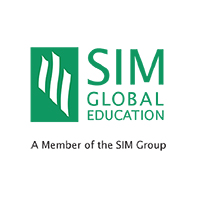托福阅读答题技巧大揭秘:助你轻松攻克阅读难关
Editor:Mark| Time:2025-04-16在托福考试中,阅读部分常常让许多考生感到头疼。它不仅要求考生具备扎实的词汇量和语法基础,还需要掌握一些有效的答题技巧。今天,我们就来深入探讨一下托福阅读的答题技巧,帮助大家在考试中取得更好的成绩。
一、托福阅读题型分析
托福阅读题型多样,常见的有词汇题、指代题、细节题、推理题、修辞目的题、句子简化题、插入文本题和文章总结题等。不同的题型有不同的解题思路和方法,了解这些题型特点是掌握答题技巧的第一步。
词汇题主要考查考生对词汇在语境中的理解,通常会给出一个单词,要求从四个选项中选出其同义词或近义词。这就需要考生平时积累大量的词汇,并学会通过上下文来猜测词义。
指代题则是找出文中某个代词所指代的对象,关键在于理解代词所在句子以及上下文的逻辑关系。
细节题是对文章具体信息的考查,考生需要根据题干中的关键词,在文章中定位到相关信息,然后仔细阅读并选择正确答案。
推理题要求考生根据文章内容进行合理推断,答案往往不会直接出现在文中,需要考生对信息进行分析和归纳。
修辞目的题主要考查作者使用某种修辞手法或举例的目的,需要考生理解上下文的逻辑关系。
句子简化题是将文章中的某个句子进行简化,要求考生选择意思与原句最接近的选项,这需要考生准确把握句子的核心结构和关键信息。
插入文本题是给出一个句子,要求考生将其插入到文章中合适的位置,需要考生理解文章的逻辑连贯性。
文章总结题则是要求考生从多个选项中选出能够概括文章主要内容的选项,这需要考生对文章有整体的把握。
二、答题技巧详解
- 快速浏览文章 在开始答题前,先快速浏览文章的标题、首尾段和每段的首句,了解文章的主题和大致结构。这样在答题时能够更有针对性地定位信息,节省时间。
- 关键词定位 对于细节题、推理题等,要学会利用题干中的关键词在文章中定位。关键词可以是人名、地名、数字、专有名词等。定位到相关信息后,仔细阅读上下文,理解题意,然后选择正确答案。
- 注意逻辑关系 托福阅读文章中常常存在各种逻辑关系,如因果关系、转折关系、并列关系等。理解这些逻辑关系有助于考生更好地理解文章内容,也能帮助解答一些推理题和修辞目的题。例如,看到“because”就要想到因果关系,看到“but”就要注意转折。
- 排除干扰项 在做选择题时,要学会排除明显错误的干扰项。干扰项可能与文章内容不符、过于绝对、无中生有等。通过排除干扰项,可以提高答题的准确率。
- 合理猜测词义 遇到词汇题时,如果不认识单词,可以通过上下文来猜测词义。例如,根据单词所在句子的逻辑关系、前后文的提示等进行推测。同时,也可以利用词根词缀来辅助猜测。
- 重视句子结构分析 对于句子简化题,要准确分析原句的句子结构,找出核心成分和关键信息。然后对比选项,选择结构和意思最接近的句子。
- 注意时间管理 托福阅读考试时间有限,要合理分配时间。一般来说,每篇文章答题时间控制在20分钟左右。如果遇到难题不要过多纠缠,先跳过,等做完其他题目后再回来思考。
三、实战演练
下面我们通过一篇托福阅读文章来实际运用一下这些答题技巧。
文章标题:The History of the Internet
第一段
The Internet has come a long way since its inception. It all began in the 1960s when the United States Department of Defense developed a network called ARPANET. This network was designed to connect different military bases and research institutions, allowing for the sharing of information in case of a crisis.
第二段
Over the next few decades, ARPANET evolved and expanded. More universities and research centers joined the network, and new technologies were developed to improve its functionality. In the 1980s, the National Science Foundation (NSF) created a new network called NSFNET, which became the backbone of the Internet in the United States.
第三段
During the 1990s, the Internet really took off. The World Wide Web was invented, and ordinary people began to use the Internet for various purposes. E-commerce also emerged, allowing businesses to sell products and services online. The number of Internet users grew exponentially, and the Internet became an integral part of modern life.
第四段
Today, the Internet continues to evolve. Mobile devices have made it possible to access the Internet from anywhere at any time. Social media has also had a profound impact on the way people communicate and interact. The Internet has truly become a global phenomenon, connecting people from all over the world.
题目1:What was the purpose of developing ARPANET? A. To connect universities and research centers. B. To allow for the sharing of information in case of a crisis. C. To create a new network called NSFNET. D. To promote e-commerce.
答案:B 解析:根据第一段“This network was designed to connect different military bases and research institutions, allowing for the sharing of information in case of a crisis.”可知,ARPANET的目的是在危机情况下允许信息共享,所以答案选B。
题目2:When did the Internet really start to become popular among ordinary people? A. In the 1960s. B. In the 1980s. C. In the 1990s. D. Today.
答案:C 解析:由第三段“During the 1990s, the Internet really took off. The World Wide Web was invented, and ordinary people began to use the Internet for various purposes.”可知,20世纪90年代互联网真正开始在普通人中流行起来,答案是C。
通过以上实战演练可以看出,掌握托福阅读答题技巧能够帮助我们更高效地答题,提高准确率。
总之,托福阅读虽然有一定难度,但只要我们熟悉题型特点,掌握有效的答题技巧,并通过大量的练习不断巩固,就一定能够在阅读部分取得理想的成绩。希望大家都能运用这些技巧,在托福考试中顺利通关,实现自己的留学梦想。





